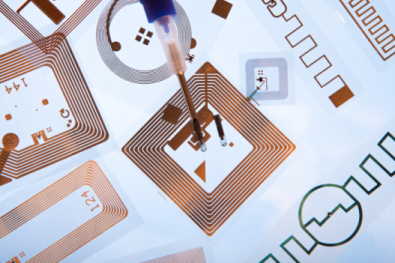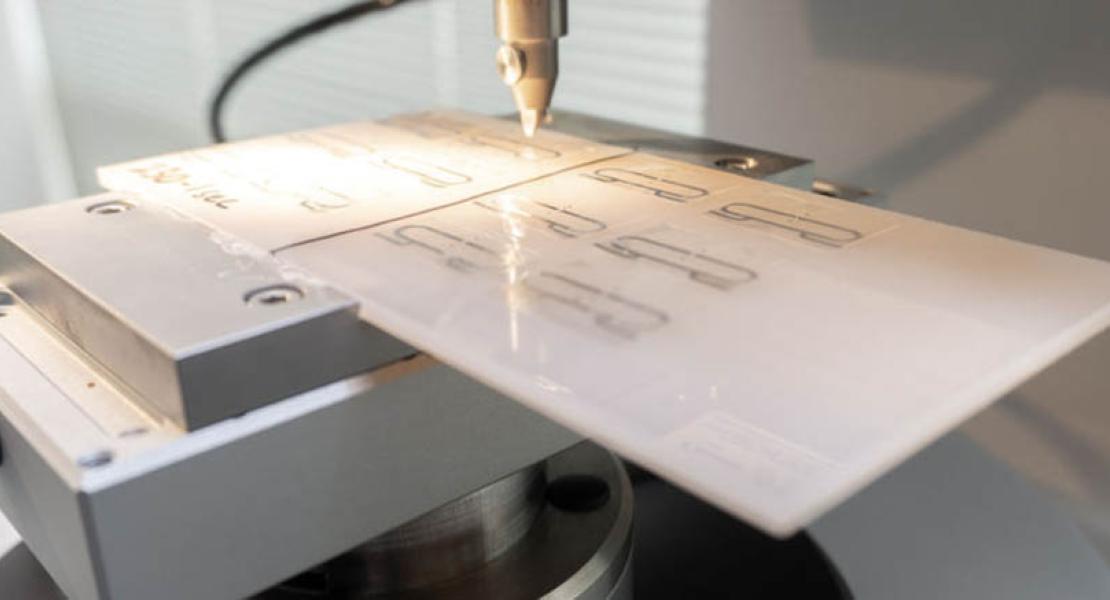What is RFID?
Radio Frequency Identification, or RFID, refers to a technology where information is transmitted wirelessly over radio waves. It is an automatic identification method that uses radio waves to read and capture information stored on a tag attached to an object.
How does RFID work?
As mentioned above RFID uses radio wave to read and capture information stored on an RFID tag. These radio waves transmit data from the RFID tag to a reader, which then transmits the information to the RFID software program.
What are the advantages to RFID?
There are a number of advantages to using RFID technology. Not only are RFID systems contactless, but they also do not require line of sight like other auto ID technologies. For different applications spanning various industries, RFID technologies offer a long-term and durable solutions for better asset management and tracking.

What is an RFID system? What's in an RFID system?
RFID systems are made of three main components: tags, readers and middleware.

- Tags are essentially small memory banks, storing bit of valuable information that can be used for asset management and a variety of other purposes. They use radio waves to communicate with nearby readers, sending over portions of identifying data. The information sored in RFID tags can range anywhere from a single serial number to multiple pages of data.
- Readers, on the other hand, are basically the other end of the information exchange. They are what we use to take those radio waves from the tags and translate them back into useful data. Readers are devices with one or more antennas that can emit their own radio waves and scan the signals of any RFID tags within range.
- RFID readers offer some versatility depending on the needs of your application. You can have mobile readers that you can carry around in your hand to scan tags, or they can be mounted in a single location to scan tags that enter their proximity. Readers can even be built into existing architecture like a cabinet or doorway.
- Middleware serves as the essential interface between the reader and your company databases and information management software. Not only does middleware handle communication between the reader and your existing systems, but it also helps to filter, aggregate and interpret all of that data coming from the RFID tags.
What are the different kinds of RFID tags?
There are two main types of RFID tags: active and passive. Active RFID tags have a battery which is used as a power supply so the tags are always "on." Passive RFID tags, on the other hand, do not have a battery and are only operable when they are in the range of the RFID reader. There are advantages and disadvantages to both types of RFID tags. Active RFID tags have a much longer read range and can also store more information. On the flip side, they are more expensive and have a shorter lifespan then their passive counterpart. Passive RFID tags are more economical and last longer than active RFID tags; however, they do have a shorter read range and can't store as much data as active RFID tags.
RFID systems can vary in performance based on their frequency. There are three main frequency ranges for passive RFID systems: low frequency, high frequency and ultra-high frequency.
- Low Frequency - RFIDs that transmit in low frequencies are the simplest and most basic option available. Low-frequency options can range anywhere from 30 to 300 KHz, with very short read ranges - often only a couple of centimeters - and limited data transmission. These frequencies are typically used in applications such as animal tracking for livestock and simple access control.
- High Frequency - Most RFID systems operating in a high-frequency range will come in at 13.56 MHz, though they can range anywhere from 3 to 30 MHz. 13.56 MHz is the standard frequency due to the near-field communication, or NFC, protocol, which was approved by the International Organization of Standardization, or ISO.
High-frequency RFID systems have a somewhat greater read range than low-frequency transmissions - up to about a meter - and have larger memory options. These systems are becoming more and more popular in marketing and interactive experiences, as well as critical access control and data transfer applications.
- Ultra-high frequency RFID systems can range anywhere from 300 MHz to 3000 MHz and offer the most complex and high-performing capabilities of the different frequency ranges. They have the greatest read ranges, which are largely dependent on the type of tag used.
To learn more about our RFID solutions, contact us at [email protected].
 | About the Author: Aaron HobertAaron Hobert is our RFID Technical Specialist. Hobert joined Metalcraft in September of 1994 as a Litho Press Operator, became the Autograph Team Lead in 1998 and in April 2005 he became the RFID Sales Support Rep. He was named our RFID Technical Specialist in 2008. Aaron lives outside Charles City with his wife Diane. Mobile Phone: 641-330-2660 Email: [email protected] Office: 3360 9th St. SW, Mason City, IA 50401 Office Phone: 641-423-9460 |




